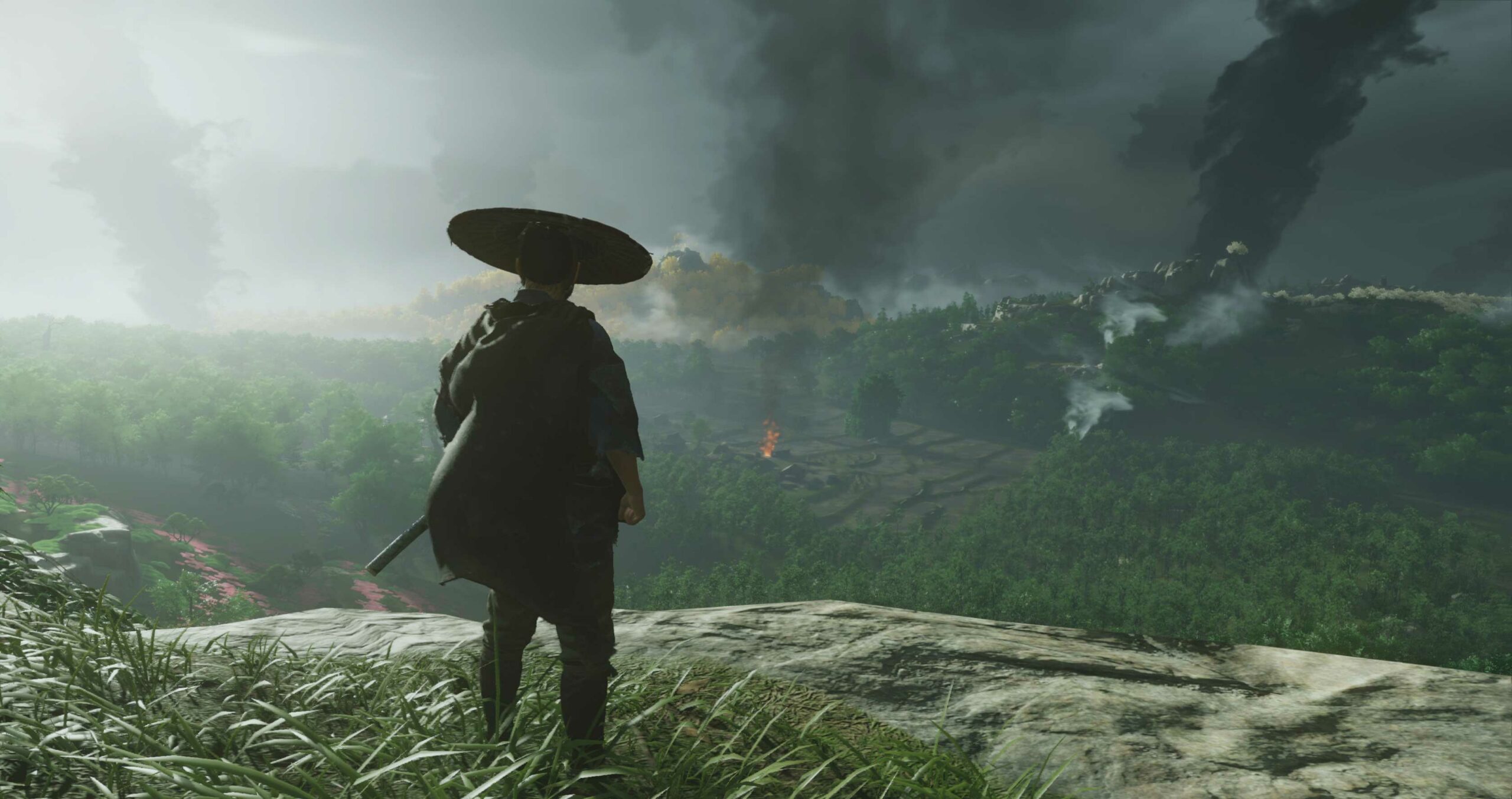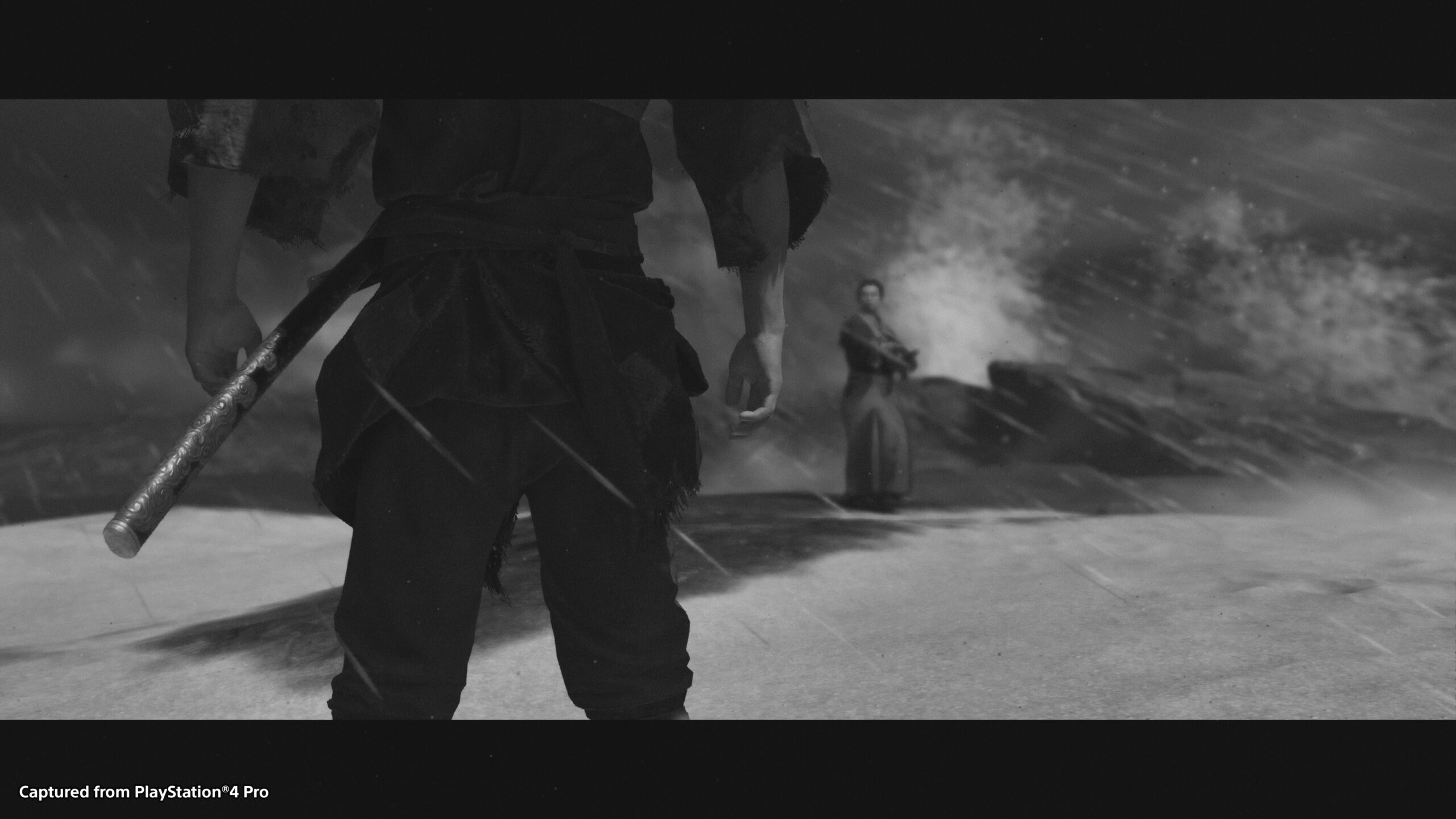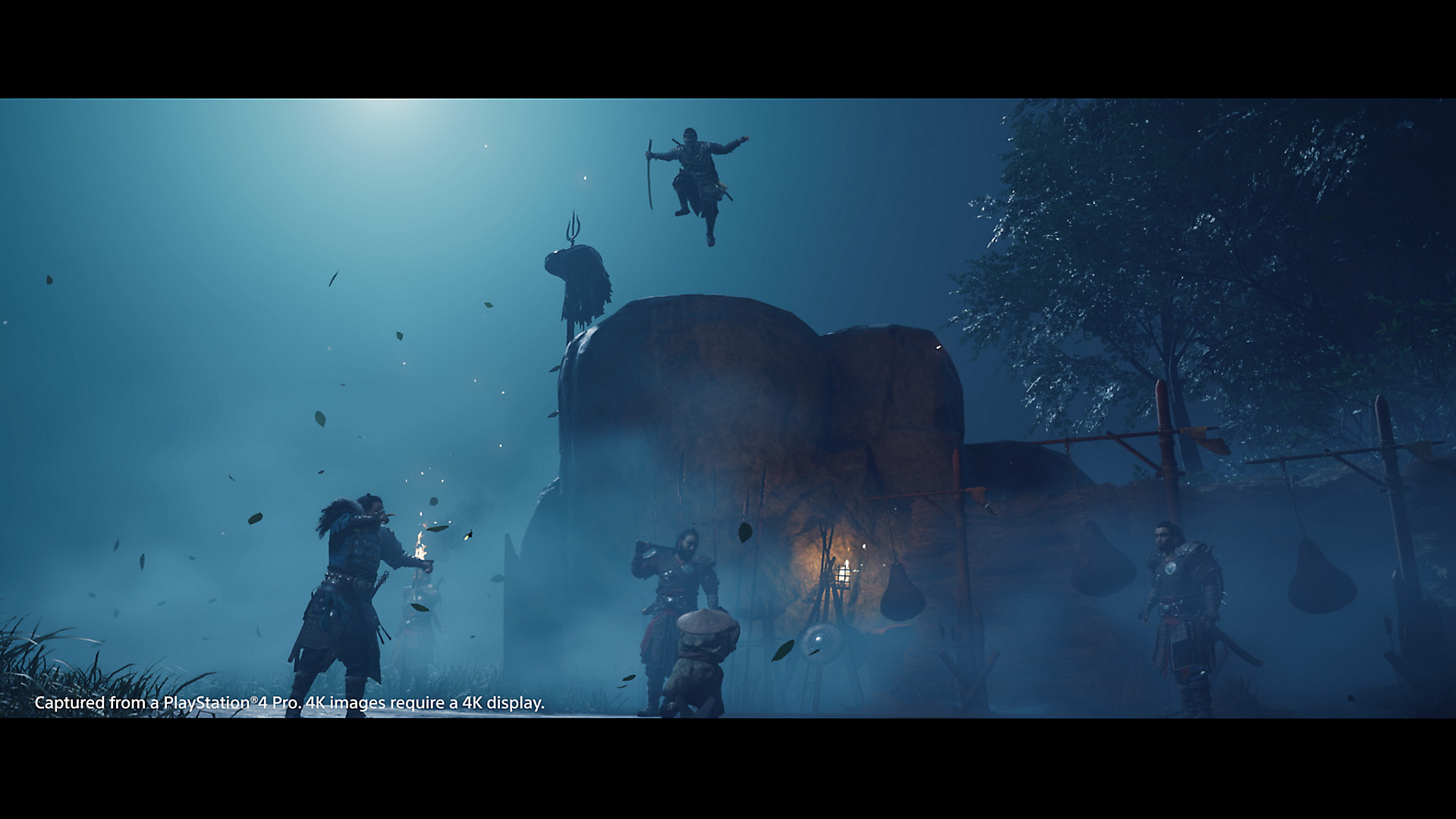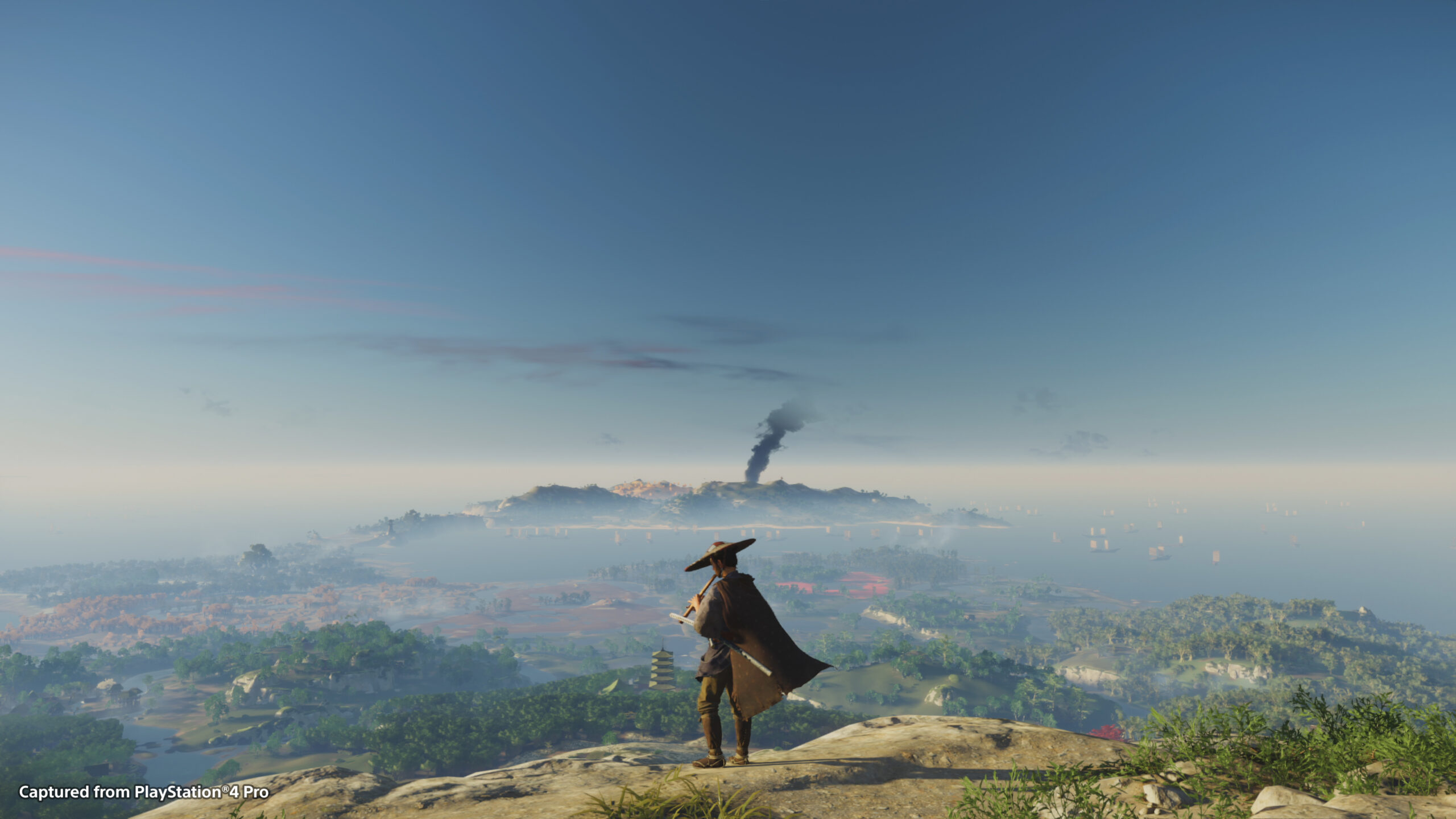
Sucker Punch is in a rather unique position among PlayStation’s extensive lineup of first-party studios.
In March 2014, the developer helped usher in the PlayStation 4 era with inFamous: Second Son, one of the console’s first marquee AAA exclusives and a critical and commercial success in its own right.
Now, Sucker Punch is set to help close out the generation with one of the PS4’s last major first-party games, Ghost of Tsushima, before the PlayStation 5 launches this holiday.
However, unlike other 2020 PS4 exclusives like Final Fantasy VII Remake or The Last of Us Part II, Ghost of Tsushima is a brand-new IP and, therefore, a mostly unknown quantity. Set in Japan in the 1270s, Ghost of Tsushima tells the story of Jin Sakai, a samurai who fights to reclaim his home from Mongols. Throughout his crusade, Jin will have to cast traditions aside and do whatever it takes to save his people and defeat his formidable enemies.
“Our objective is to give players the experience of being a samurai wandering feudal Japan — it’s a pretty exciting fantasy and a great place to visit,” Nate Fox, creative director of Ghost of Tsushima, tells MobileSyrup of the game’s premise. “Open-world games are terrific at transporting you to some place you’ve never been and giving you the freedom to explore.”
But Sucker Punch is an American team based in Bellevue, Washington — a far cry from the East Asian island country in which Ghost of Tsushima is set. “We knew that we didn’t really have the expertise to bring this culture to light,” admits Fox. “So we reached out to a lot of experts and asked for help in all sorts of things, from religion to costumes to motion. We got that feedback early and often in an attempt to make the world as authentic feeling as possible.”
Part of these efforts involved working closely with the Tokyo-based Sony Interactive Entertainment Japan Studio, a prolific first-party studio behind such PlayStation franchises as Ape Escape, Gravity Rush and Knack. Naturally, Sucker Punch also turned to classic samurai films, especially those from legendary filmmaker Akira Kurosawa, such as Seven Samurai.
This heavily influenced the photorealistic visuals and cinematic presentation of Ghost of Tsushima, which are supported with an optional black-and-white film grain, English and Japanese audio tracks, and a robust Photo Mode for sharing game captures online.
Moreover, this iconography also informed the game’s combat systems.
“For a lot of people, myself included, The Seven Samurai is just foundational when you think about how a samurai stands or fights or what kind of environment he would ride through,” explains Fox. “So to get combat feeling correct, we looked at classic samurai films and the sort of tension that exists there as warriors square off but don’t start attacking — they’re just scrutinizing one another. And when their blades go into motion, they’re lethal; a few strikes and people fall down dead.”
That same sense of lethality applies to combat in Ghost of Tsushima, where both Jin and his enemies can be felled with just a few hits. This was recently given a spotlight in PlayStation’s latest ‘State of Play’ presentation, which explored a few of Ghost of Tsushima‘s different gameplay systems.
In the State of Play, it’s briefly mentioned that Jin will have unique sword stances that he can use to adapt to different enemy types. Fox remained coy on how many stances there will be or what makes them distinct from one another, but he did elaborate on the general design philosophy behind them.
“At the start of the game, Jin is used to fighting against other Japanese warriors, but when the Mongols come, they fight in a new style that he’s not seen before — using different kinds of weapons that he’s not used to dealing with,” says Fox. “And so he has to invent new combat styles in order to better defeat the Mongols. In the game, you can switch stances and this gives you an advantage against certain types of Mongols, but it’s a tactical choice that you’ll have to make on the fly.”
Another way in which Jin adapts over the course of the game, says Fox, is through his growing reputation as the titular Ghost of Tsushima, a relentless force of nature that the Mongols come to fear. To be sure, this largely feeds into his personal journey that’s at the centre of the narrative, an epic tale of honour and sacrifice. But Fox notes that Jin’s character changes will have an affect on gameplay as well. A glimpse of this comes during the State of Play, when an enemy can be seen running away from Jin as he clears out a Mongol hideout.
“When Jin starts the story, the Mongols are pretty intimidating; they’re many in number. But as he becomes the Ghost, his reputation precedes him and the Mongols start to fear him. And that’s something that you can use to your advantage,” explains Fox.
“Different sorts of actions that the player can do might take a Mongol out of the playing field just by virtue of them being terrorized. Now the details of how that works I would like you to discover when you play the game. But it is a good feeling to go from being intimidated to instead intimidating the enemy.”
Part of being the “Ghost” means you can take out enemies stealthily, which was also shown in the State of Play. However, Fox stresses that this is simply meant to offer a different approach to engaging the Mongols. “As the story progresses and Jin learns more abilities, the options for the player get wider. That doesn’t mean that it’s a binary decision. It’s not like you choose between being a samurai or being a Ghost. It’s just your playstyle of where you want to land.”
There’s more to Ghost of Tsushima besides samurai action, though. Through the game’s meticulously crafted open-world setting, Sucker Punch aims to fully immerse players in the beauty of the Japanese archipelago.
“The world is much bigger than anything we’ve done before and it’s also much more diverse. We’re trying to transport players back to feudal Japan, and that means taking a lot of different biomes from mainland Japan,” says Fox. “Things like deep bamboo forests, cold mountaintops, towering waterfalls — all of the things that you picture in your mind’s eye [have been] put onto the island.”
To help players explore this vast world, Sucker Punch has developed a few rather innovative methods of navigation. In place of traditional waypoints that show you exactly where to go, Ghost of Tsushima employs more subtle environmental cues to steer you in the right direction. These include the ‘Guiding Wind’ and wild animals that help lead you to points of interest. This was one of the main features on display during the State of Play, and Fox says it was area of focus for the team in general.
“We wanted to transport players to the island of Tsushima, and a bunch of UI on the screen can get in the way of you feeling like you’re really there and listening to the sounds of nature or seeing the animals all around you. Something like the Guiding Wind is a way to point players to an objective without putting in anything too obtrusive,” says Fox.
“The same is true for a bird that might try to get your attention and say, ‘hey, there’s a secret nearby.’ And that’s different than an arrow flashing in your face. By having these things be embedded in the world, the world is more alive. It’s like the island is helping you help it.”
Of course, the team is also making sure there are good reasons to explore Tsushima in the first place.
According to Fox, a significant part of this incentive will come from Ghost of Tsushima‘s various side stories that complement the main narrative. “The story is all about Jin reclaiming Tsushima from the Mongol invaders, and that takes a lot of different forms: things like the shipyard [raid] shown in the State of Play and in the stories that you get involved in all around Tsushima,” says Fox.
“The people you meet are all suffering in very many ways because of this invasion and as a samurai, [Jin] feels that it is his duty to help these people out — no matter what straits they find themselves in […] Ghost of Tsushima is an anthology of stories, and we’re trying to create a very vast experience that isn’t just one person’s point of view.”
A main example of that, Fox points out, is the first-ever gameplay reveal of Ghost of Tsushima at E3 2018. While many people initially assumed the demo was taken from the main storyline, Sucker Punch revealed that it actually focused entirely on a sidequest.
Fox hopes that feeling of discovery is exactly what will entice the player to continue to explore Tsushima. “As a player, if you see something and you want to explore it when you get there, you need to be rewarded,” says Fox. “You need to find a story or some equipment or something that you can use to upgrade your gear. [We want you] to find yourself on a loop: looking for the next unexplainable little thing that drives you over the next hill.”
Ghost of Tsushima launches exclusively on the PlayStation 4 on July 17th.
This interview has been edited for clarity and language.
MobileSyrup may earn a commission from purchases made via our links, which helps fund the journalism we provide free on our website. These links do not influence our editorial content. Support us here.






